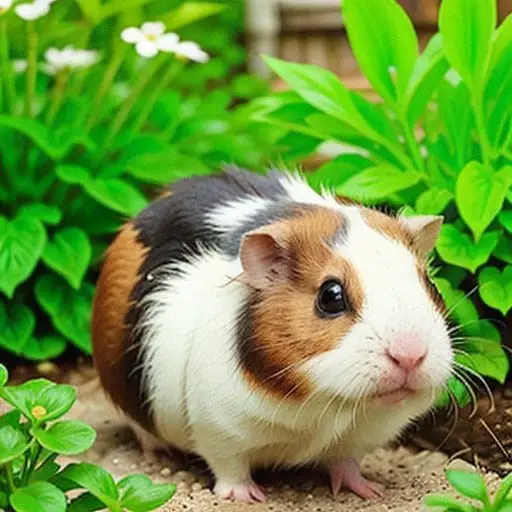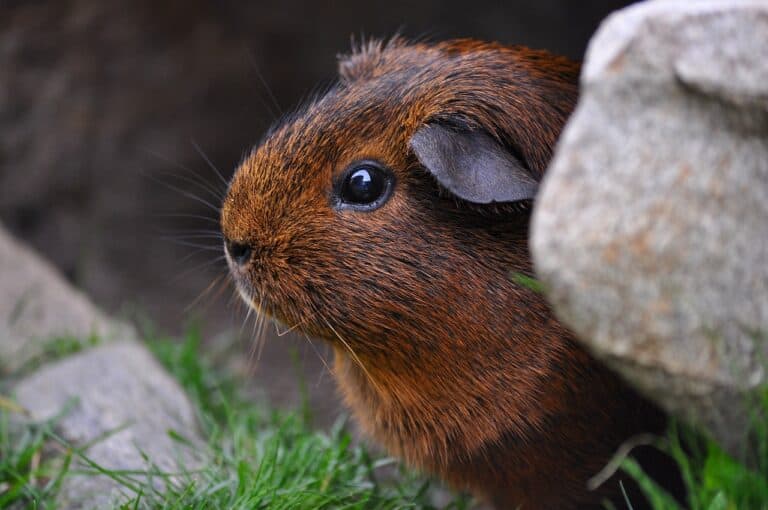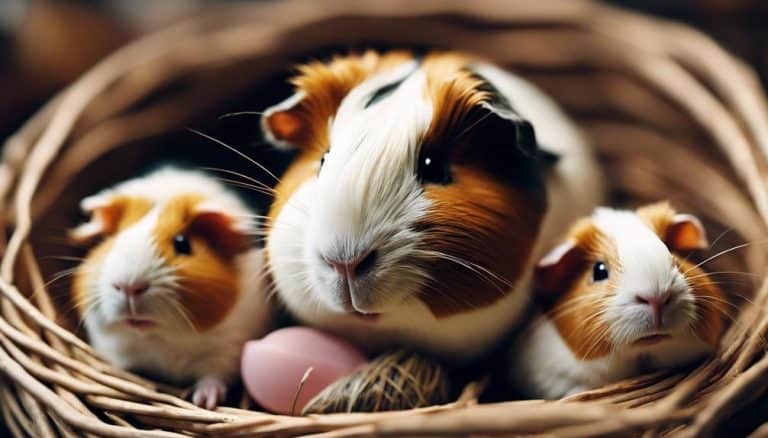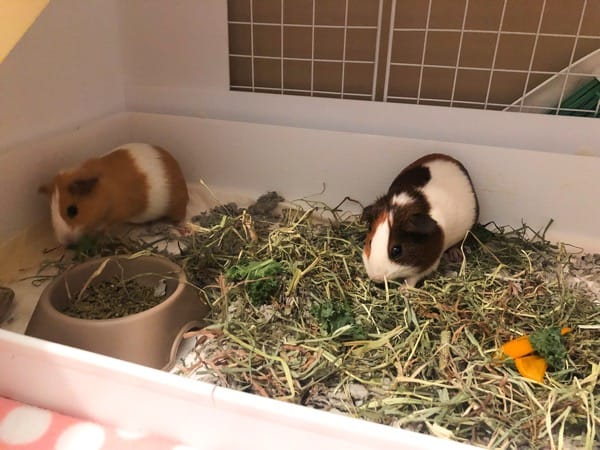What Guinea Pig Squeaks Mean: Understanding Your Pet's Communication
When it comes to understanding what your guinea pig’s squeaks mean, it’s like deciphering a secret code that reveals a window into their world. Each squeak, chirp, or rumble serves as a tiny piece of a puzzle, revealing their innermost thoughts and feelings.
By learning to interpret these vocalizations, you can establish a deeper connection with your pet and safeguard their well-being. But what about those subtle nuances in their communication that often go unnoticed?
Let’s explore the fascinating world of guinea pig squeaks and uncover the hidden messages they convey.
Deciphering Guinea Pig Wheeking
When we hear our guinea pigs wheeking, it’s essential to understand that this high-pitched sound serves as an important form of communication for them. Guinea pig sounds, including wheeking, play a significant role in how these animals express their emotions and needs to their owners. As an animal that relies heavily on vocalizations, guinea pigs use wheeking to convey excitement, often signaling anticipation of food or playtime. By recognizing and interpreting these sounds, we can better respond to our pets’ requests and strengthen our bond with them.
Guinea pig wheeking isn’t just a random noise; it’s a deliberate form of communication. Different variations of wheeks can indicate varying levels of excitement and anticipation in guinea pigs. Understanding these nuances in their vocalizations allows us to gauge our pets’ emotional states more accurately. By acknowledging and responding to their wheeks appropriately, we can enhance our guinea pigs’ well-being and guarantee a harmonious relationship based on clear communication.
Understanding Chutting and Bubbling Sounds
Understanding chutting and bubbling sounds in guinea pigs provides valuable insights into their emotional well-being and communication methods. Chutting sounds, also known as clucking, indicate contentment and enjoyment, often heard during interactions or exploration. On the other hand, bubbling noises represent a quiet sound of happiness and are typically associated with pancaking behavior, demonstrating a positive emotional state in guinea pigs. These vocalizations form part of the guinea pig’s communication repertoire, conveying various emotions and experiences in their daily lives.
To facilitate a clearer understanding, the table below summarizes the key points regarding chutting and bubbling sounds in guinea pigs:
| Chutting Sounds | Bubbling Noises |
|---|---|
| Indicate contentment and enjoyment | Reflect a quiet sound of happiness |
| Commonly heard during interactions or exploration | Accompanied by pancaking behavior |
| Convey positive emotional states | Provide insights into guinea pigs’ well-being |
Being attuned to these sounds allows guinea pig owners to better grasp their pet’s mood and comfort levels in different situations, strengthening the bond between them and meeting their emotional needs effectively.
Interpreting Rumbling and Chattering
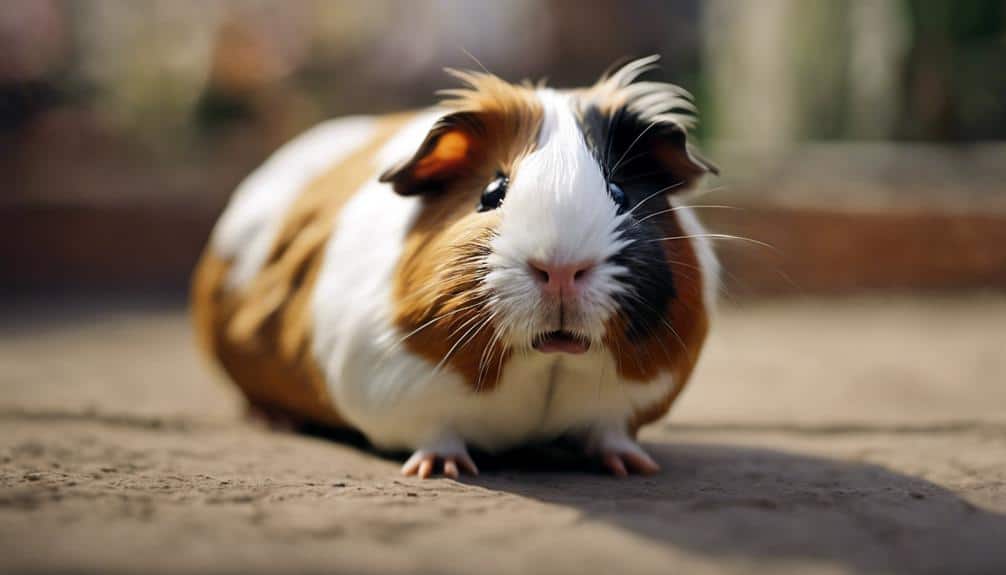
Exploring the nuances of guinea pig communication, we now shift our focus to interpreting the significance of rumbling and chattering in their social interactions. Rumbling, commonly associated with dominance or courtship behavior, is often observed in male guinea pigs during courtship displays. This low, vibrating sound can serve as a way to establish hierarchy within a group.
On the other hand, teeth chattering in guinea pigs typically indicates annoyance, aggression, or a readiness to fight. It’s a clear warning signal that shouldn’t be ignored, especially when directed towards other guinea pigs or external threats.
Nonetheless, recognizing that non-dominant guinea pigs may also rumble to express dissatisfaction without escalating into aggressive behavior towards their companions. Deciphering the context in which these vocalizations occur is important for understanding guinea pig communication accurately. Both rumbling and teeth chattering play integral roles in social interactions and hierarchy establishment among guinea pigs, emphasizing the importance of paying attention to these auditory cues.
Decoding Whining and Chirping
Deciphering guinea pig vocalizations like whining and chirping is important for accurately understanding their emotions and needs. Whining, often expressed through a moaning squeak, typically indicates annoyance or dislike in these small pets.
On the other hand, chirping, a bird-like noise made by guinea pigs, can be misunderstood. This sound may actually signal curiosity or mild stress rather than distress. Guinea pig chirping is a versatile form of communication that can suggest disturbance or a simple desire for attention.
By grasping the context of guinea pig whining and chirping, we can better interpret their emotions and requirements. This enhanced understanding not only facilitates better communication but also strengthens the bond between humans and guinea pigs.
Recognizing Distress: Shrieking and Other Sounds
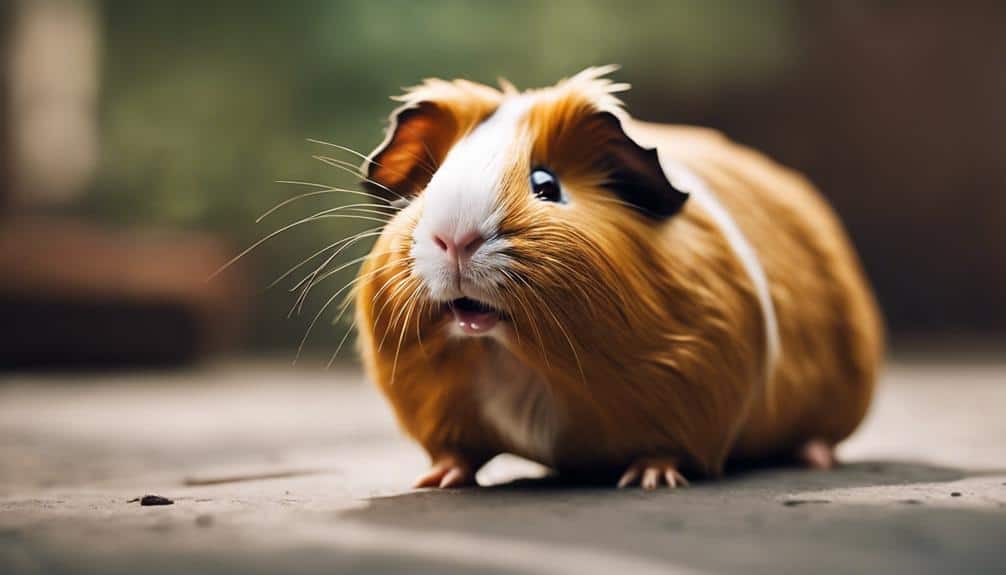
When guinea pigs shriek or emit high-pitched squeals, it is important to promptly recognize these distress sounds to address their potential needs and guarantee their well-being. Shrieking in guinea pigs typically indicates alarm, fear, or pain, signaling a need for immediate attention. Other distress sounds may include high-pitched squeals, indicating discomfort or danger. Understanding the context of shrieking and squealing helps in addressing potential issues affecting the guinea pig. Differentiating between distress sounds and normal vocalizations is critical for prompt and appropriate care. Responding promptly to distress sounds can help alleviate the guinea pig’s discomfort and strengthen the bond between pet and owner.
| Distress Sounds | Meaning |
|---|---|
| Shrieking | Alarm, fear, or pain requiring immediate attention |
| High-pitched squeals | Discomfort or potential danger |
Conclusion
To sum up, understanding your guinea pig’s communication is key to building a strong bond with your pet.
Did you know that guinea pigs can recognize their owners’ voices and respond with excitement?
This highlights the importance of listening to and interpreting your furry friend’s vocalizations and body language cues.
By paying attention to these signals, you can provide better care and nurture a deeper connection with your beloved guinea pig.


